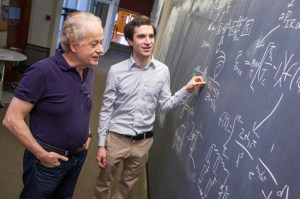 When it comes to renewable energy, the Sun seems to be one of the most obvious sources, and this is why a lot of research and efforts are directed towards finding means to harness sunlight.
When it comes to renewable energy, the Sun seems to be one of the most obvious sources, and this is why a lot of research and efforts are directed towards finding means to harness sunlight.
But if we have to think of what would be the opposite of solar, or incoming light, then that would be outgoing light, or the energy that is reflected from the Earth back to space. A group of scientists from Harvard Scool of Engineering and Applied Sciences think that harvesting this exact waves might well prove to be one of the best new ways for renewable energy generation.
The team, led by Professor Federico Capasso, specialist in applied physics, semiconductor physics, photonics, and solid-state electronics, believes that a technology, which works as a reversed solar cell, should be able to capture all outgoing infrared emissions. The scientists propose two types of instruments, or energy harvesters, resembling thermal power generators and typical solar cells, but they both work in reverse.
The former consists of two plates, one that has the same temperature as the Earth surface, and another one, placed on top, which is coated with a highly-radiative material. Although it was initially expected that the plates would not generate sufficient amount of power, experiments proved that the thermoelectric effect that occurs between the two, does create quite a substantial amount of energy.
The latter harvester operates on a much smaller scale, and it works based on the difference in temperatures between resistors and nanoscale electronic diodes. When the temperature of the diode is higher than this of a resistor, a current forms, which travels towards the cooler component.
The findings of the study appeared in the Proceedings of the National Academy of Sciences earlier this month. In the paper the scientists show the feasibility of using electronic devices that can generate power by harnessing outgoing energy from the Earth surface. Although still highly theoretical and still full of hurdles, the potential of the work is great, and the team is looking forward to tackling all new challenges that could come their way. They are convinced that new materials such as graphene and developments in the field of electronics would definitely help making the method practical sooner than initially thought.
Image (c) SEAS Communications


































sounds like a peltier plate